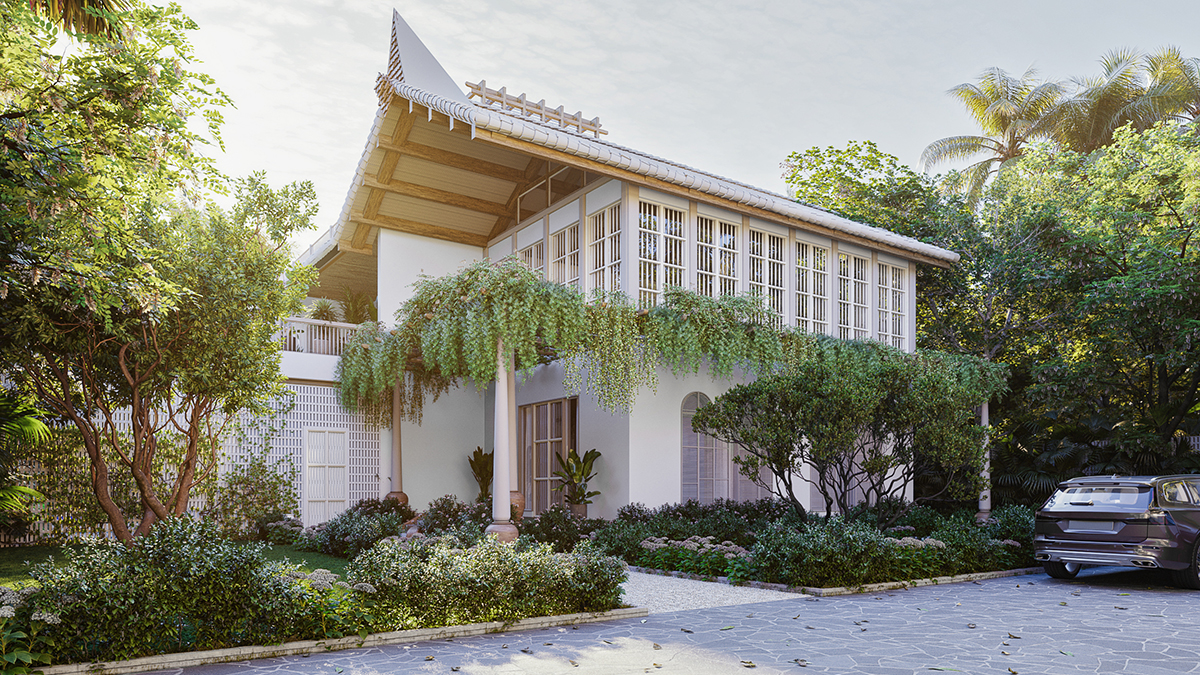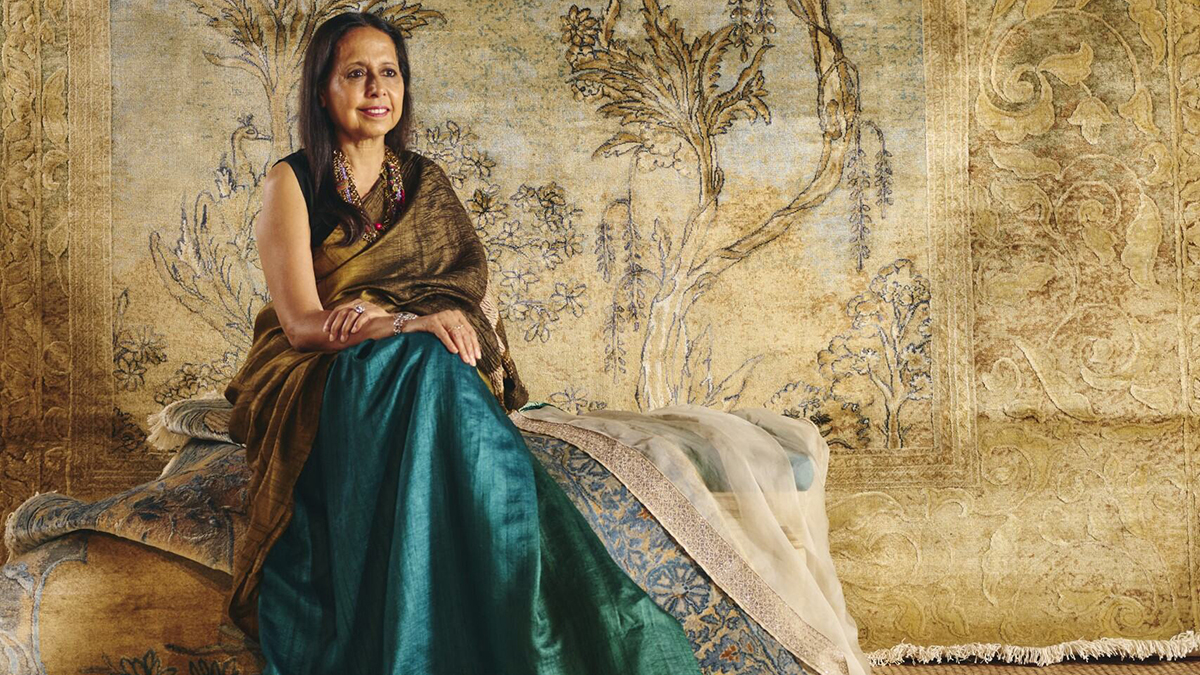Ralph Lauren once said that for him, fashion is not just clothes, it is life. “I write through my clothes,” he said. “I am always inspired by the heroine or hero of my movie; whether it is what she or he wears, where they live, the dress or the jacket, the furniture and the art on the walls are all part of the story. I create a world around them―the clothes, the watches, the furniture. It’s a world beyond fashion.” For many Indian fashion designers, this philosophy holds true. Fashion is the lens through which they view life. Where we see what is, they see what could be. Design is programmed into their DNA, and it finds expression in the carpets, home interiors, restaurants and fragrances that bear their signature.
That’s why designer Kunal Rawal wants to create enduring designs that can be passed down through generations, whether through heirloom groom wear or through classic home spaces. He does not want his homes to be mere investments. He wants them to be enduring legacies. He is just one of a tribe of couturiers whose creativity can no longer be dammed within a runway.
At the India Couture Week in July, Rawal gave a teaser of what was coming. There was a rose and a gajra (garland) on each seat, and white cushions with a ‘Bramha-Bee’ printed on them. The ramp was festooned in greenery, perhaps a reflection of his impending switch. He is now designing a branded home space with the luxury living brand BOHEIM. He says he wants to work on this project from scratch, just like he does with his fashion collections, weaving a story around it, planning the setting, backdrop and mood.
 Brick tricks: Home designed by Abu Jani & Sandeep Khosla.
Brick tricks: Home designed by Abu Jani & Sandeep Khosla.
While fashion designers have been designing independent housing projects for a while, they are now getting into commercial branded buildings. Samarth Bajaj, founder of BOHEIM, says the concept of branded buildings in the west has existed for more than two decades now, but it is still expanding in Asia, with Dubai being a lucrative market. For BOHEIM in Goa, he has collaborated with Gauri Khan, Abu Jani & Sandeep Khosla, and Rawal. “I want to take the India story global,” says Bajaj. “Indian designers have such aesthetic sensibilities that they bring to their own office spaces and the homes they curate. It was about time we brought them into real estate.” BOHEIM currently has 10 projects in Alibaug, Goa and Hyderabad. Now, Bajaj plans to explore markets in Dubai, Sri Lanka, Africa, and London.
 Home designed by Gauri Khan for BOHEIM
Home designed by Gauri Khan for BOHEIM
As for designers Abu Jani & Sandeep Khosla, they started designing interiors in 1993. They began with Pratiksha, Jaya and Amitabh Bachchan’s home in Mumbai, and then went on to design the homes of Ritu and Rajan Nanda, Madhu and Chander Verma, and Shweta and Nikhil Nanda. In 2021, they collaborated with Lodha Luxury in Mumbai to design one of India’s tallest apartment buildings―‘Lodha Ciel’ at The World Towers.
 Building partners: Samarth Bajaj (left), founder of BOHEIM, and designer Kunal Rawal | Sanjay Ahlawat
Building partners: Samarth Bajaj (left), founder of BOHEIM, and designer Kunal Rawal | Sanjay Ahlawat
This time, when they collaborated with BOHEIM for its project Duo Paraiso in Goa, they combined comfort with class. “We work on very select projects with clients who are ready to invest a large budget and happy to leave the designing to us,” they say. “Over the years we have completed 25 spectacular residential projects in Delhi, Mumbai, Rishikesh, Hyderabad, Dubai and London. We have signed on to design projects in Goa.” They believe, as artists, their creativity has never been restricted to fashion. “Design is in our veins and its expression will spill over to other mediums,” they say. Event and wedding designs are also their forte.
 Perfume by Shantnu & Nikhil
Perfume by Shantnu & Nikhil
On the design aesthetics of his BOHEIM project, Rawal says that the youth of India is far more progressive than those in first world nations. “They want comfort while maintaining a nomadic life,” he says. “Having elements that are functional is a big factor. In our Goa project, we have bits of Goan influences combined with the ethos of the label Kunal Rawal and BOHEIM.” Rawal plans to launch his candle line by Diwali, which will be part of his BOHEIM home. He also wants to open more stores (he currently has four) in Kolkata and Goa, and is currently working on his upcoming clothing line.
In the past decade or so, Indian fashion designers have increasingly looked beyond the ramp to diversify their businesses. One reason for this is the huge corporate investments into fashion brands. Reliance Brands Limited (RBL), a subsidiary of Reliance Industries, for example, has a 40 per cent stake in MM Styles Private Ltd, helmed by designer Manish Malhotra, who did the pre-wedding decor at the recent wedding of Anant Ambani and Radhika Merchant. Reliance also acquired a majority 52 per cent interest in Ritu Kumar’s label, who later branched out into homeware. Designers Shantnu & Nikhil and Rohit Bal launched their perfume lines, Tarun Tahiliani designed a resto-bar and Bal designed suites for The Park Hotel in Hyderabad and Delhi, respectively. Earlier this year, Sabyasachi Mukherjee revitalised Indian Accent’s 110-seat dining space with plush fabrics and vivid wallpapers. Manish Malhotra’s home laminate sheet collection, too, has been a popular addition to his body of work. In February, Anushka Khanna collaborated with Neuma, director-producer Karan Johar’s European restaurant, to blur the lines between fashion and dining through her desserts.
Fashion also sparkled on the carpets designed by Tahiliani, Anju Modi, Anita Dalmia and Ashdeen Z. Lilaowala for Obeetee Carpets’ Viraasat collection. For Tahiliani, visiting Mirzapur with the Obeetee team was a revelation. “The artisans there work with such brilliance and soul, creating an environment that feels idealistic and beautiful,” he says. Modi took 2.5 years to create the five to seven carpets she designed for the collection, each one an imaginative take on what the forests of the Ramayana might have looked like. “I used elements of flora and fauna and soulful colours to bring this vision to life, making it feel as though you have stepped into a palace from 500 years ago,” she says.
These ventures of fashion designers often work as surrogate advertisements for their brands. Take the Armani Hotels & Resorts, for instance, designed by Giorgio Armani, which has come to represent the understated elegance and attention to detail that one associates with the designer. However, not all designers have traversed from the runway to the commercial market. With some, it has been the other way around. Founded in 1837, Hermes, for example, originally produced saddles and riding gear, while Louis Vuitton did luxury chests. Fashion, it seems, is a two-way street, and rush hour is just beginning.


